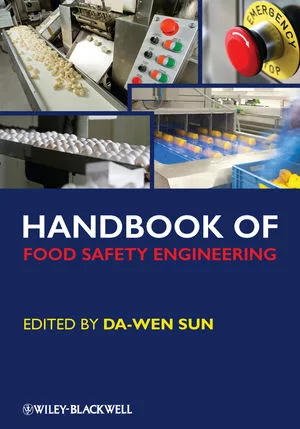Latest Data Shows 97.7 Percent of Canadian Food is Compliant With Chemical Residue Standards

Image credit: Raccool_studio via Freepik
The Canadian Food Inspection Agency (CFIA) recently published its National Chemical Residue Monitoring Program (NCRMP) Annual Report for 2021–2022, which states that 97.7 percent of the tested food samples were compliant with Canadian standards for chemical residues. A copy of the complete report can be requested from CFIA here.
NCRMP is a CFIA surveillance program based on Codex Alimentarius principles that allows the agency to monitor Canadian food for potential chemical hazards. Results obtained through the NCRMP enable CFIA to take appropriate follow-up actions on non-compliant food samples, to engage with and educate industry on the safe use of agricultural chemicals and practices, to identify trends in the prevalence of chemical residues and contaminants in the Canadian food supply, and to further optimize the agency’s surveillance activities and other control measures to minimize potential health risks to Canadians. NCRMP data is routinely provided to Health Canada for potential standard setting, risk assessment, and other risk management purposes. The findings are also shared with Canada’s major trading partners, including the U.S. and EU.
Samples for the latest report were collected between April 2021 and March 2022. More than 93,000 tests for residues of veterinary drugs, pesticides, metals, environmental contaminants, and mycotoxins were performed on approximately 14,500 NCRMP monitoring samples. The COVID-19 pandemic affected sampling activities, but CFIA remains confident in the results and conclusions provided in the report.
The overall compliance rate with Canadian standards for chemical residues was 97.7 percent, which is slightly higher than in previous years.
Both domestic and imported foods were sampled, including meat, fresh and processed produce, honey, eggs, dairy, and maple products. In 2021–2022, 98.8 percent of domestic foods and 96.4 percent of imported foods were compliant with Canadian limits. All but two food commodity groups had compliance rates exceeding 95 percent; those were imported fresh fruit and vegetables (94.7 percent) and imported dairy products (90.9 percent).
A lower compliance rate was observed for domestic egg products (97.3 percent) compared to imported egg products (100 percent), as well as for domestic meat (98.6 percent) compared to imported meat (99.9 percent). For all other food commodity groups, the domestic samples had a higher compliance rate than their imported counterparts.
For egg products, most of the positive or non-compliant test results were due to residues of nicarbazin and ionophore drugs, which are used to treat enteric parasites in broiler chickens. Since these drugs are not approved to be administered to layer hens in Canada, no maximum residue limits (MRLs) exist; therefore, the regulatory limit of quantification (LOQ) was used to determine compliance of these samples. It is likely that the presence of nicarbazin and ionophore drugs in egg samples was due to contaminated feed given to hens.
Looking for quick answers on food safety topics?
Try Ask FSM, our new smart AI search tool.
Ask FSM →
Domestic meat samples were collected at slaughter facilities across Canada, comprising unprocessed raw meats like muscle, fat, kidney, liver, and other tissues. Imported samples were limited to products that arrived at the border, such as cooked and uncooked muscle, as well as processed and ready-to-eat (RTE) foods. Although the compliance rates for both domestic and imported meat were high (98.6 percent and 99.9 percent, respectively), the slightly higher compliance rate in domestic meat was mainly due to veterinary drug residues, as these chemicals accumulate at higher levels and for longer periods of time in unprocessed meats and in tissues like liver, fat, and kidney.
The types of domestic and imported dairy products sampled under the NCRMP were very different. Most of the domestic dairy samples were raw milk, except for products collected at retail locations for non-bovine dairy products, which included milk, cheese, yogurt, and frozen yogurt. By contrast, the imported dairy products sampled included a mix of cheeses, both from bovine and non-bovine sources, as well as some non-bovine milk, yogurt, and frozen yogurt samples. Compliance with Canadian chemical residue standards in domestic dairy was very high (99.7 percent), but imported dairy products had the lowest compliance rate (90.9 percent) of all food commodity groups, mainly due to veterinary drug residues (i.e., thyreostats, benzimidazoles, and endectocides) found in cheeses.
All of the non-compliant results for fresh produce were due to the presence of one or more pesticides exceeding Canadian MRLs. The lower compliance rate for fresh fruit and vegetable samples (94.7 percent) in comparison to domestic samples (98.9 percent) was mostly caused by the lower number and type of pesticides registered for use in Canada versus importing countries. For detected pesticide residues with no established Canadian MRLs, the general MRL of 0.1 parts per million (ppm) was used to assess compliance. In this context, even though imported produce samples had higher rates of non-compliance, the results do not necessarily indicate a health risk to consumers, says CFIA.









